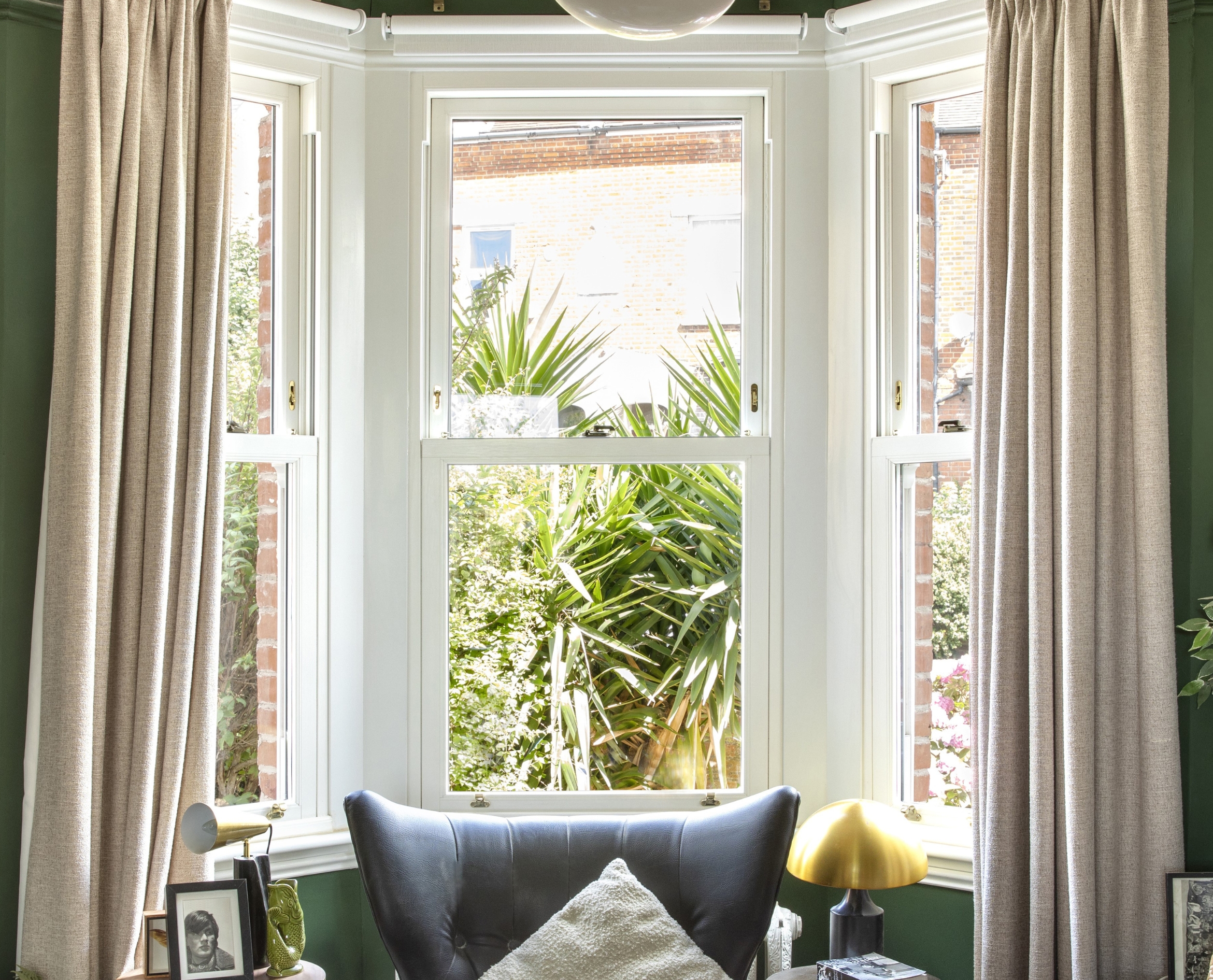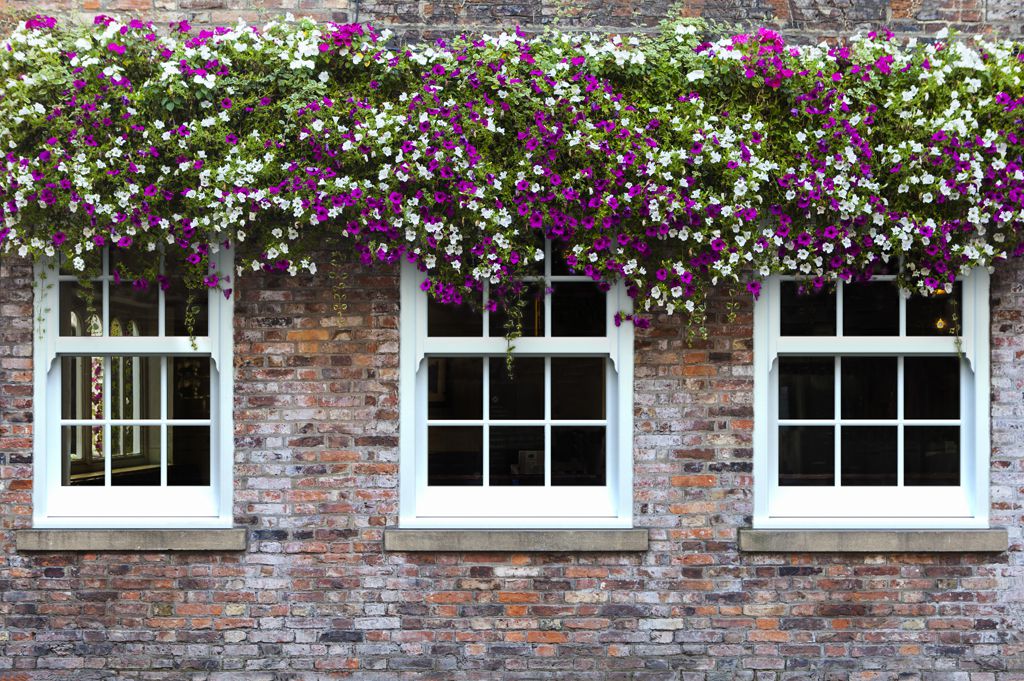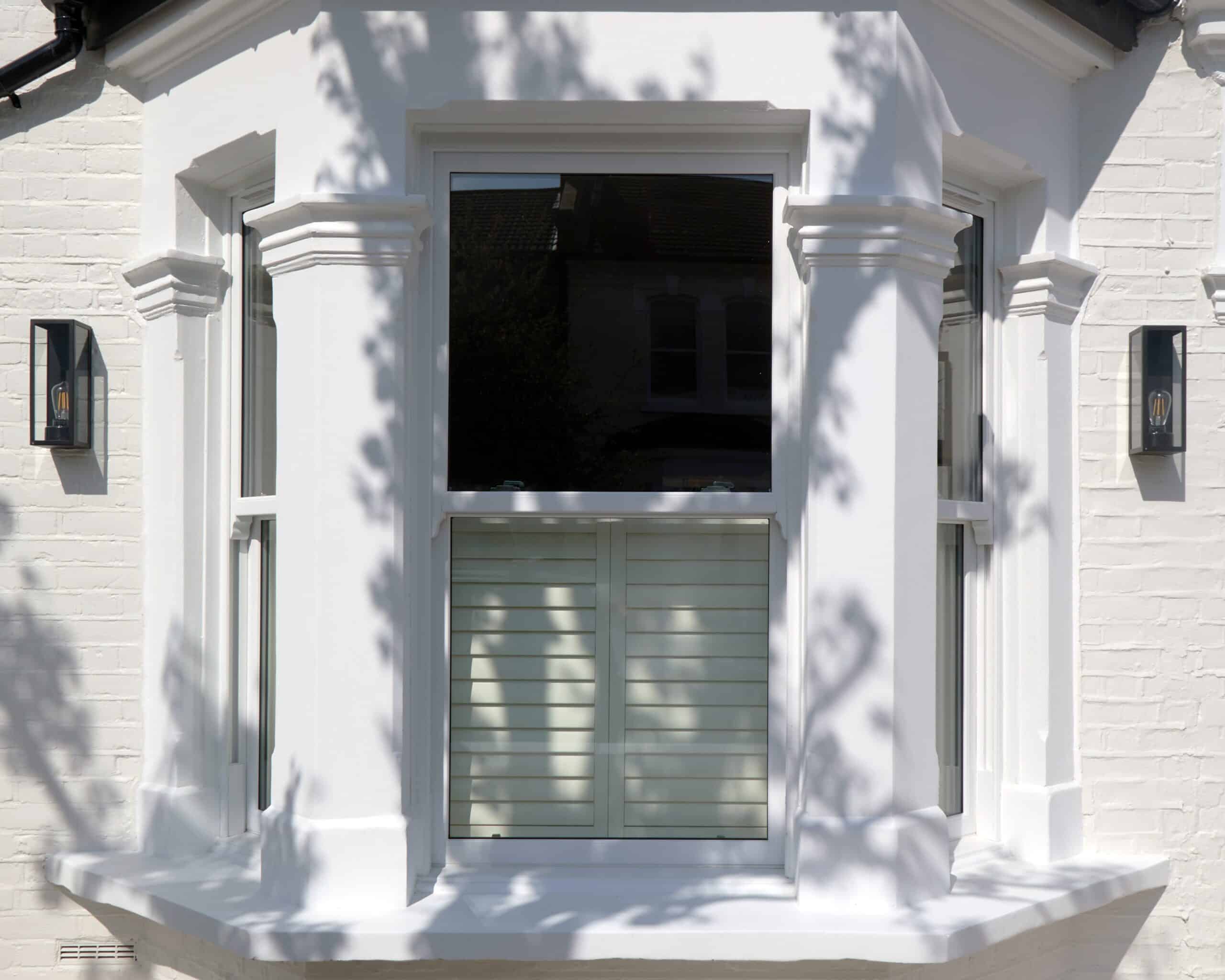Sash windows have long been a defining feature of British architecture, and among them, box sash windows hold a special place. Still favoured in period homes and increasingly chosen for modern properties, they offer a classic design that adapts to many settings.
This guide explores what makes box sash windows unique and why they remain a popular choice for homeowners today.

What Are Box Sash Windows?
Box sash windows are a traditional style of sash window that operate using a cords-and-weights mechanism. The sashes (moving panels of the window) are counterbalanced by hidden weights housed in a ‘box’ frame. This system has been used for centuries and is valued for its reliable operation.
Because of their design, box sash windows are especially suited to larger window openings. The concealed housing also preserves the proportions of the window, maintaining the refined appearance that makes this style such a defining feature of period architecture.
Why Timber Matters
Timber box sash windows remain the benchmark for authenticity. Unlike uPVC alternatives, timber allows for fine detailing, from glazing bars and horns to mouldings, that reflects the character of traditional sash designs.
Most of our modern timber sash windows are made from engineered Red Grandis, a sustainably grown hardwood. Engineered construction reduces the risk of twisting or warping, while Red Grandis itself offers a smooth, consistent grain that takes both paint and stain beautifully. Frames are factory-finished with microporous coatings that protect the wood yet allow it to breathe, helping prevent cracking or peeling.
Sustainably sourced and FSC®-certified, Red Grandis also provides reassurance for homeowners who want both authentic craftsmanship and responsible forestry practices.

Ideal Applications of Box Sash Windows


Heritage and Conservation Properties
Slimline double glazing or single-glazed units are also available to comply with heritage regulations For homes in conservation areas or listed buildings, it is often essential that replacement windows replicate the originals as closely as possible. Local planning authorities typically expect details such as glazing bars, mouldings, and horns to match historic designs.
Box sash windows, with their traditional cords-and-weights mechanism, are particularly suited to these settings. Planning consent may be required for some properties, and it is always advisable to check with your local authority before work begins.
Box Sash Windows in Modern Homes
Although closely associated with Georgian, Victorian, and Edwardian architecture, box sash windows also have a place in contemporary homes.
With today’s technology, box sash windows combine traditional styling with modern performance. Features such as A-rated glazing, secure locking systems, and durable finishes help them to meet the demands of everyday use while reducing energy loss and ongoing maintenance.
Glazing Options for Box Sash Windows
Glazing plays a central role in how box sash windows perform. Standard double glazing offers excellent thermal efficiency, helping to retain heat and reduce energy use. For even greater insulation and noise reduction, triple glazing can be specified.
In conservation areas, where maintaining slim sightlines is important, slimline double glazing provides a discreet solution. An alternative is vacuum glazing, which achieves thermal performance that can exceed triple glazing while appearing almost identical to single glass.

Looking After Box Sash Windows Properly
With the right care, box sash windows can last for decades. Maintenance requirements are relatively light thanks to modern finishes, but a few simple steps will help keep them in excellent condition:
- Regular cleaning: Wipe down timber frames and glass with a soft cloth and mild soapy water to remove dirt and prevent build-up.
- Check paintwork: Inspect frames every couple of years for signs of wear. Microporous coatings usually last 7–10 years before repainting is needed.
- Lubricate moving parts: A light application of silicone spray on pulleys, cords, and locks helps maintain smooth operation.
- Inspect seals: Ensure all seals remain intact to preserve energy efficiency.
- Professional servicing: For heritage or heavily used windows, occasional servicing can keep cords, weights, and balances working reliably.
Is a Box Sash Window Right for Your Home?
Box sash windows and their classic proportions suit period properties perfectly.
Advances in glazing and finishes make them just as practical in contemporary homes. When deciding if they are right for you, it’s worth considering your property’s style, any planning requirements, and your own preferences for design and maintenance.
If you need advice, our team is always on hand to guide you towards the best option for your project. Reach out to us today.

Frequently Asked Questions About Box Sash Windows
Are box sash windows the same as sash windows?
Yes, box sash windows are a type of sash window. The ‘box’ refers to the housing that contains the weights used in the cords-and-weights mechanism.
Do I need planning permission to replace box sash windows?
Not always. If your property is not listed or in a conservation area, you can usually replace windows without formal permission. In heritage or conservation settings, however, local authorities often require replacements to replicate original designs. It’s always best to check with your local council before starting work.
Can box sash windows be double-glazed?
Yes. Box sash windows can be fitted with modern double or triple glazing to improve insulation and security.
How often do timber box sash windows need repainting?
Thanks to modern microporous coatings, timber sash windows need repainting far less often than in the past. With proper care, repainting is usually required only every 7–10 years. Factory-applied finishes help extend the life of the paint and protect the timber against cracking or peeling.
Are box sash windows suitable for new builds?
Yes. While box sash windows are closely associated with more historic homes, they also suit modern properties. Their classic proportions bring balance to contemporary designs, while features such as A-rated glazing and secure locking systems ensure they meet today’s performance standards.
What is the lead time from order to installation?
Lead times vary depending on the specification and whether planning consent is required. As a guide, most timber sash windows take several weeks to manufacture once designs and surveys are complete. Installation is then scheduled to minimise disruption. For a more accurate timescale, it’s best to confirm at the point of order.
Are box sash windows draught-proof?
Our modern box sash window designs are fitted with discreet seals and careful joinery that significantly reduce air leakage compared to older, original windows. This improves comfort inside the home while helping to lower heating costs, without affecting the traditional look of the window.




